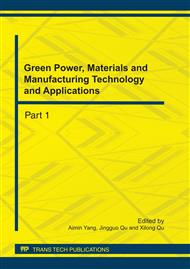p.622
p.626
p.631
p.635
p.641
p.646
p.652
p.657
p.662
The Viscosity Measurement of Polyethylene Glycol Dilaurate
Abstract:
This paper mainly studied the Viscosity of polyethylene glycol dilaurate and the surface tension, discussing the effects of temperature, concentration, rotate speed on the viscosity. The results show that the viscosity of the long carbon chain fatty acid was higher than the short carbochain, and the viscosity decreasing trend with increase of the temperature. The internal structure of emulsion may take place changing due to the temperature changing. The liquid crystal disintegration or occurred phase change could result that the viscosity appeared the abrupt peak. The viscosity of emulsion maybe appear one or two peaks with the changing of concentration, that the viscosity decreasing with increase of the temperature and rotate speed.
Info:
Periodical:
Pages:
641-645
Citation:
Online since:
August 2011
Authors:
Price:
Сopyright:
© 2011 Trans Tech Publications Ltd. All Rights Reserved
Share:
Citation:


